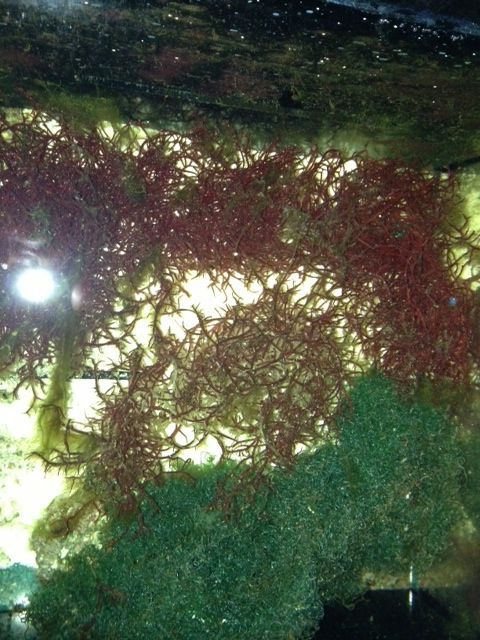justpeachy36
Member
Good afternoon,
I have a question I have a 125g with 2" live sand bed 115lbs dried reef rock Eshoppers 200 sump with 9.5 mag drive return pump Bubble Mag6 protein skimmer and two wave makers with timer (not turned on yet) I have had the tank running for a month now with Dr. Tim's one and only to cycle with a little clown fish and three mermaid fan plants. I have order a coral beauty and the Firefish goby for the tank but don't want to over load my bioload. Can I house one fish in the refugium on my other 55gal tank for a week or so? The refugium has Chaeto and red Gracillia along with algae growing. I have added copepods to this refugium (haven't seen them in there but I put them in) I'm afraid with all the algae growing in there that it would hurt the fish. The 55g is 1 1/2 years old.

this was taken 5/17/13 its got a lot more algae growth now. (you don't clean them right)
I have a question I have a 125g with 2" live sand bed 115lbs dried reef rock Eshoppers 200 sump with 9.5 mag drive return pump Bubble Mag6 protein skimmer and two wave makers with timer (not turned on yet) I have had the tank running for a month now with Dr. Tim's one and only to cycle with a little clown fish and three mermaid fan plants. I have order a coral beauty and the Firefish goby for the tank but don't want to over load my bioload. Can I house one fish in the refugium on my other 55gal tank for a week or so? The refugium has Chaeto and red Gracillia along with algae growing. I have added copepods to this refugium (haven't seen them in there but I put them in) I'm afraid with all the algae growing in there that it would hurt the fish. The 55g is 1 1/2 years old.

this was taken 5/17/13 its got a lot more algae growth now. (you don't clean them right)


